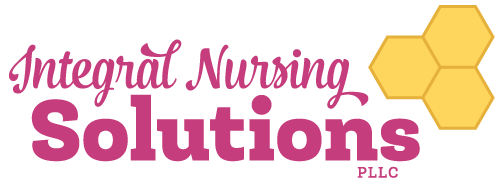Some habits are foundational to a vibrant, joy filled life, like eating healthy foods regularly and routinely brushing teeth. It is nice to know the way to work every day, so that you can be available for other activities such as talking to a friend, whistling a tune, listening to the radio, or just people watching.
 Some habits were developed early in our lives to help manage difficult feelings and situations but now, they no longer serve us; In fact, they may be harmful. The neuropathways of these unskillful habits are deep and are hard to let go of. Unhealthy habits like overeating, smoking, interrupting, substance abuse or arrogance, once may have protected or provided us with comfort. So how do we work with these deeply engrained neural pathways? The good news is that we don’t have to act out our habits or addictions because we always have a choice to move towards or away from happiness and health.
Some habits were developed early in our lives to help manage difficult feelings and situations but now, they no longer serve us; In fact, they may be harmful. The neuropathways of these unskillful habits are deep and are hard to let go of. Unhealthy habits like overeating, smoking, interrupting, substance abuse or arrogance, once may have protected or provided us with comfort. So how do we work with these deeply engrained neural pathways? The good news is that we don’t have to act out our habits or addictions because we always have a choice to move towards or away from happiness and health.
* The first step in working with habits is to recognize them
Becoming aware of them mentally, emotionally, physically and spiritually. Saying, “Woops, there it is again.” There is no need for judgement, just, “Oh, there it is again”. Once we are aware often enough, we can then ask ourselves if we want to keep that habit or addiction. We are not stuck with them forever because when there is intention, there is movement in the direction of the goal.
5 Stages to Changing Behaviors
1. Pre-contemplation: There is no intention of changing in the next 6 months
2. Contemplation: The person is considering changing in the next 6 months
3. Preparation: The person is making some changes, but not at goal
4. Action: The person has 6 months of active behavior change
5. Maintenance: the person has changed the behavior and is in a place of acceptance of obstacles that occur to undermine the new behavior- and able to apply cognitive restructuring, psychosocial and spiritual strategies to maintain the changed behavior. Current Nursing Theory
 I noticed that I was constantly interrupting others and sometimes trying to anticipate what they were going to say, even speaking as they spoke, ending their sentences with them. I was uncomfortable with this habit, but had practiced it for a long time, in the effort to provide me with a certain feeling of closeness. Now in the last stage of changing the behavior, I am maintaining the practice of not interrupting and trying to finish sentences for others. I have greater comfort with my own separateness and occasional discomfort.
I noticed that I was constantly interrupting others and sometimes trying to anticipate what they were going to say, even speaking as they spoke, ending their sentences with them. I was uncomfortable with this habit, but had practiced it for a long time, in the effort to provide me with a certain feeling of closeness. Now in the last stage of changing the behavior, I am maintaining the practice of not interrupting and trying to finish sentences for others. I have greater comfort with my own separateness and occasional discomfort.
As you reflect upon your life, is there a habit that no longer serves you?
Where in the 5 Stages of Changing Behavior are you regarding that habit?
Please share with us over time your process of making a change.
6 months from now you might be just a little bit happier and we are here to provide support.

“What one thing could you do in your personal and professional life that, if you did on a regular basis, would make a tremendous positive difference in your life? … Our effectiveness takes quantum leaps when we do them.”
-Stephen Covey
The 7 Habits of Highly Effective People


Leave a Reply